#liebieghaus
Explore tagged Tumblr posts
Text

Mummy portrait (wax encaustic on sycamore wood) of a girl, from the Fayum region of Egypt. Artist unknown; ca. 120-150 CE (reign of Hadrian or Antoninus Pius). Now in the Liebieghaus, Frankfurt am Main, Germany. Photo credit: Carole Raddato.
#history#ancient history#Ancient Egypt#Roman Empire#Roman Egypt#art#art history#ancient art#Roman art#Egyptian art#Romano-Egyptian art#mummy portrait#encaustic painting#Liebieghaus
3K notes
·
View notes
Text




I need you to know that these were teeny sculptures made out of ivory, literally some of these are smaller than the size of a child's palm and my mouth was literally AGAPE the whole time I was in this room
16 notes
·
View notes
Text

Süßwasserwalfisch auf dem Trockendock im Hof des Liebieghauses. Speckstein kommt ganz offenbar von Anton Schneider 5 aus Frankfurt Schwanheim.
.
.
Freshwater whale on the dry dock in the courtyard of the Liebieghaus. Soapstone clearly comes from Anton Schneider 5 from Frankfurt Schwanheim.
13 notes
·
View notes
Text

DANNECKER, Heinrich Ariadne on the Panther (front and back views) 1812-14 Marble, height 146 cm Liebieghaus, Frankfurt
531 notes
·
View notes
Text
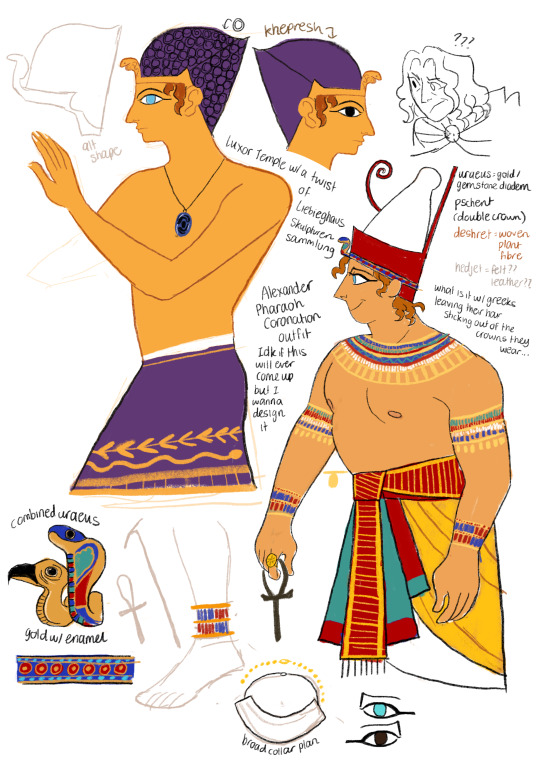
Thinking about the Ancient Egyptian portions of Alexander Comic Book 2. First, here's Alexander's ALKSINDRS face. This is from the relief of him on the Luxor Temple wall, with a twist from the pink granite statue of him (?) at Liebieghaus. Second, look at my man's drip!!! I am really happy with how I designed his coronation outfit - even if I have NO idea if I will ever feature it in the comic. He's looking so glam with all the beads and gold.

Who is this guy... I swear he has absolutely NOTHING to do with Alexander at all. No way.
225 notes
·
View notes
Text
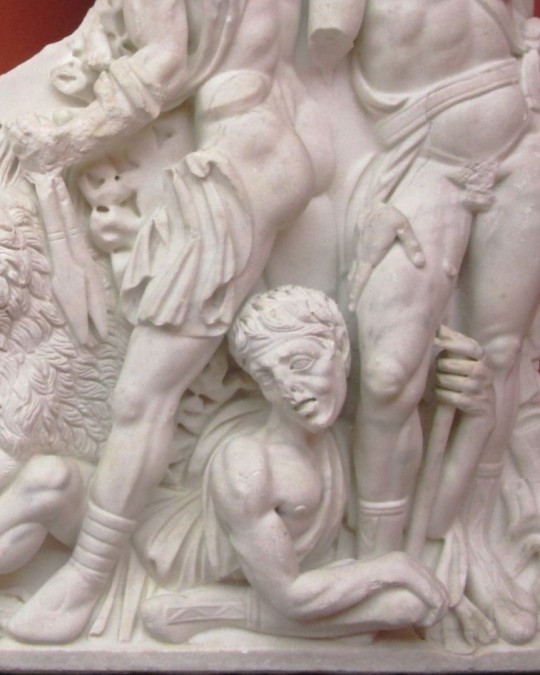
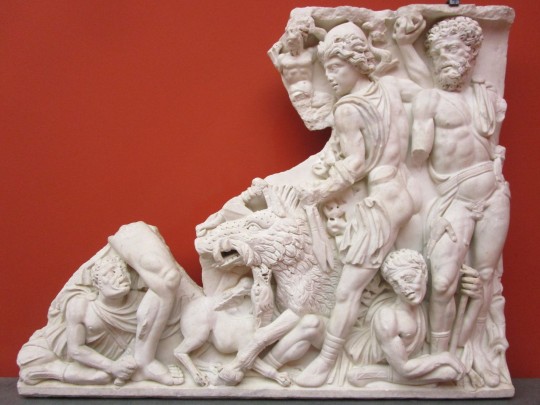
The Hunt of the Caledonian Boar - Marble sarcophagus relief known as the Meleager Sarcophagus, c. 250-270 CE
Liebieghaus Sculpture Museum, Frankfurt, Germany
134 notes
·
View notes
Text

MWW Artwork of the Day (7/31/24) Myron (Greek, fl. 480-440 BCE) "Athena of Myron" (c. 450 BCE) Marble Roman copy of Greek bronze original Liebieghaus, Frankfurt am Main
Myron worked almost exclusively in bronze, and though he made some statues of gods and heroes, his fame rested principally upon his representations of athletes, in which he made a revolution, according to commentators in Antiquity, by introducing greater boldness of pose and a more perfect rhythm, subordinating the parts to the whole. Pliny's remark that Myron's works were numerosior than those of Polycleitus and "more diligent" seem to suggest that they were considered more harmonious in proportions (numeri) and at the same time more convincing in their realism.
4 notes
·
View notes
Note
I'm very fascinated with the effeminate depictions of Apollo and Dionysos. Recently I was at the Liebieghaus Skulpturensammlung in Frankfurt and saw the following statue of Apollo.

"Especially when they depict him as a musician, Greek artists tend to bring out an androgynous aspect of Apollo’s existence. Above the forehead of this striking head, the hair is piled up in a feminine hairstyle familiar to us from sculptures of Aphrodite. It is divided into two wide braids, casually tied together on top of the head. The sensuous expression is emphasised by the half-open mouth, but also by the moving turn of the head." (From: https://liebieghaus.de/en/antike/head-god-apollo-apollo-antium)
for uhm personal reasons I need to know all about feminine apollo so please tell me more
Aha, that's something I love to talk about. I was about to make a post about this anyway so: There's a lot of ancient greek vase paintings that show Apollo wearing feminine robes and accessories that were usually worn by women. For example,
a veil

(Heracles ascending to Olympus)
Multi pinned sleeve
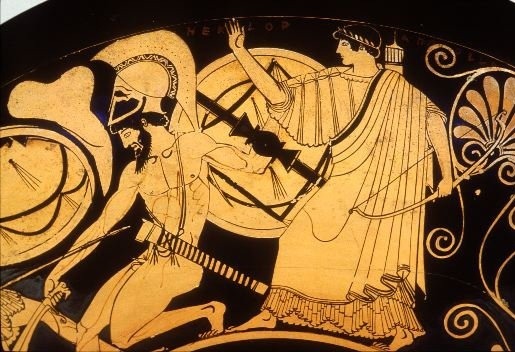
(Apollo helping Hector in the Trojan war)
Cross sash

(The musical contest between Apollo and Marsyas)
Periskelis (the thigh band)
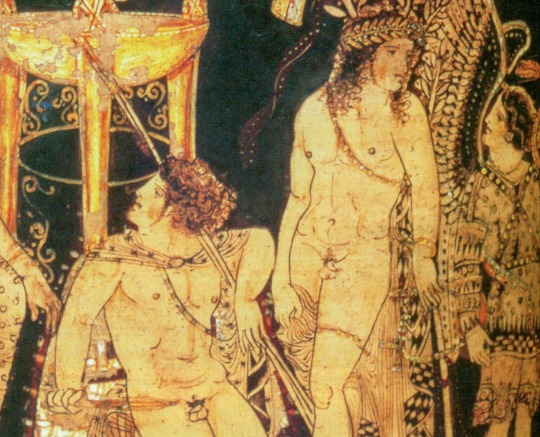
(Orestes seeking shelter at Delphi)
Here, he is wearing the chiton in a way that girls wore
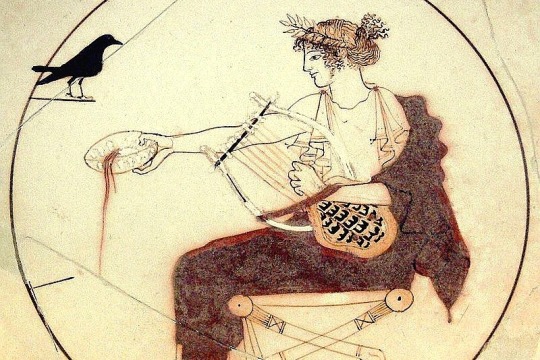
And these lithographs of ancient art have him wear such pretty dresses
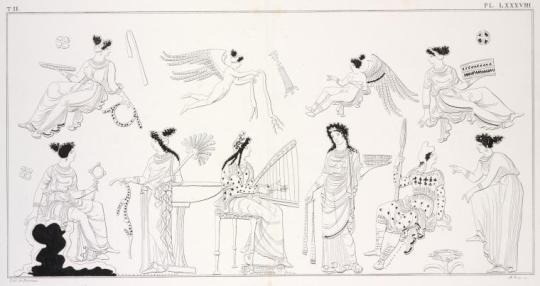
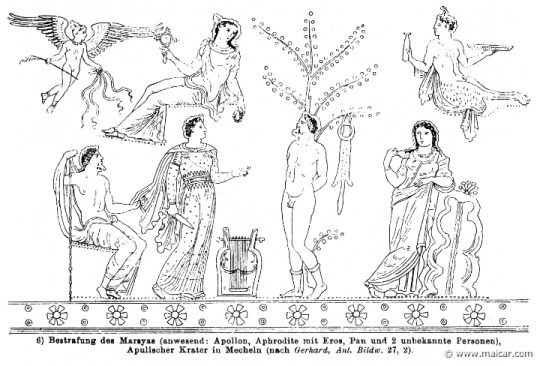
Since he is an eternal youth, 99% of the times he has long hair and youthful face - those are the very important physical traits of Apollo. There are many paintings where you will confuse Apollo for a girl.
Apart from these, I have found quite a few statues and marble reliefs too. Many of these are from Hellenistic Greece and Roman era:


As you can notice, most of these present Apollo as a musician, so maybe music played a part in Apollo being effeminte? Did the Muses have a lot of influence on him?Idk, food for thought I guess. Oh and there are a number of headless statues identified as Apollo Patroos (fatherly), where again Apollo is wearing long robes.
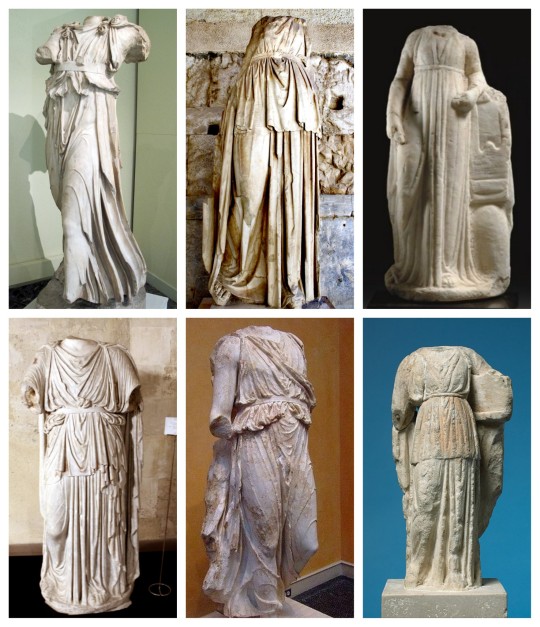
Lastly, some quotes from literary sources (FYI I have not included the hundreds of quotes describing Apollo's long hair and smooth chin):
"And ever beautiful is he and ever young: never on the girl cheeks of Apollo hath come so much as the down of manhood."
- Callimachus, Hymn to Artemis (trans. Mair) (Greek poet C3rd B.C.)
"Apollo puts his hair in order by shaping his flowing locks with soft foliage and braiding it with a golden diadem."
- Virgil, Aeneid 4.147 (trans. Ingo Gildenhard) (Latin poet C1st B.C.)
"These children Niobe placed above those of Latona [Leto], and spoke rather contemptuously against Apollo and Diana [Artemis] because Diana was girt in man's attire, and Apollo wore long hair and a woman's gown."
- Hyginus, Fabulae 9 (trans. Grant) (Roman mythographer C2nd A.D.)
[describing an effeminate man]: giving himself excessive airs of daintiness and indulging in all sorts of effeminacy; sometimes darting his eyes about; sometimes throwing his hands hither and thither...sometimes personating Aphrodite, sometimes Apollo"
- Tatian, Address to the Greeks 22 (trans. Pratten) (Assyrian Theologist C2nd A.D)
"[in the fragments of Lucilius' satires (C2nd B.C)]: Taking issue with Apollo, whom Romulus mocks as a pretty boy (pulcher) with a fondness for effete dance, Romulus rants against foreign luxuries"
- The Cambridge Companion to Seneca (ed. Shadi Bartsch, Alessandro Schiesaro)
fair number of Renaissance paintings continued this tradition by making Apollo look feminine and beautiful. But for some reason most of the modern adaptations make him macho, the typical Manly Man 🙄 Come on people, you're throwing away the potential here! I wanna see an Apollo who can rock a suit and a pretty dress. Give me more of Apollo and Dionysus hanging out together at drag parties.
5K notes
·
View notes
Text
Art Theory and Criticism - Journal reflection 6
An exhibition created in 2003 titled Gods in Color, puts to light the previously hidden truth about Greek statues and their pigmented exterior which is made up of coloured dye. These recreations made for the exhibition are based on archaeological findings and are fully restored to their rather garish colours. This is done to break the historic illusion of white as the main colour for the Classical, Hellenistic, and later periods like Neo-Classicism’s sculptures. The breaking down of this stigma is acted upon by choosing their original colours, which were very bold if pictured freshly done that time, which make them look kitschy in today’s societal views. Which is why compared to the elegance associated with the classical Greek marble statue, puts forward new commentary that still originates from centuries ago. As Stated from Liebieghaus (2020):
Museum exhibitions of ancient Greek and Roman sculptures are striking for the dominance of pure white marble. But looks can be deceiving. These figures of gods and heroes were once richly clothed in vivid colors! We’ve known this for – so why does the image of whiteness still persist?

Figure 1: So-called Persian Rider, ca. 490 BC | Experimental color reconstruction of the so-called Persian Rider from the Athenian Acropolis, 2007/2019, Gods in Color – Golden Edition (liebieghaus.de)
The reconstructions of these works are pieced together using the ruins found, exposing the “former polychromy of the sculptures” (Liebieghaus, 2020). It is also important to note the change in visualisation and interpretation of the garments as compared to the blank sheets of clothes drowning in white, “Rich colors, detailed ornamentation, and countless gold dots once adorned this sculpture.” (Liebieghaus, 2020).

Figure 2: Detail of the hem of the vest of the so-called Persian Rider, showing the leaf-and-tongue pattern and a meander design, Gods in Color – Golden Edition (liebieghaus.de)
Excavations of these works only have the slightest scratches of pigment that can be seen with the naked eye. But this is enough for the artist and researcher to continue further from such a week and faint starting point. The patterns helped preserve whatever little colour was left after the Sculpture’s fate in the test of time and high chance on ruin, whether inflicted by man or nature. The unusual designs and colours make for a fresh view of these works and their time, that is when it comes to the mood and emotions, or even the narrative. However, what was lost to the naked eye can be discovered using the ever evolving technology of ultraviolet light, opening a whole new world of rediscovery and study of this already fascinating and highly researched era.

Figure 3: Archer from the west pediment of the Temple of Aphaia, ca. 480 BC | Experimental color reconstruction of an archer, the so-called Paris, in the costume of the horsemen of the neighbouring peoples to the north and east, from the west pediment of the Temple of Aphaia, Variant A, 1989–2003, Gods in Color – Golden Edition (liebieghaus.de)

Figure 4: UV-fluorescence photograph showing pattern on the leggings of the archer from the west pediment of Aphaia Temple, Gods in Color – Golden Edition (liebieghaus.de)
Reference list:
Liebieghaus, 2020. Gods in Color – Golden Edition. [online] Gods in Color – Golden Edition. Available at: <https://buntegoetter.liebieghaus.de/en/> [Accessed 19 November 2023].
0 notes
Text

Die Formen und die Farben des Alltags sind eine Richtschnur für das Leben. Ihre Bedeutung ist nicht starr, nicht fix. Der Blick auf die Dinge bleibt individuell. Die Funktion bleibt allgemein. Und die Wahrheit bleibt verborgen, denn im Kern möchte alles in Ruhe gelassen sein, als wäre das die Ordnung alles Seins, was einen Kreis schlösse, als wäre nicht die Offenheit Würze einer Lebenszeit...
.
.
The shapes and colors of everyday life are a guide for life. Their meaning is not rigid, not fixed. The view of things remains individual. The function remains general. And the truth remains hidden, because at its core everything wants to be left alone, as if it were the order of all being that closed a circle, as if openness wasn't the spice of a lifetime...
23 notes
·
View notes
Text
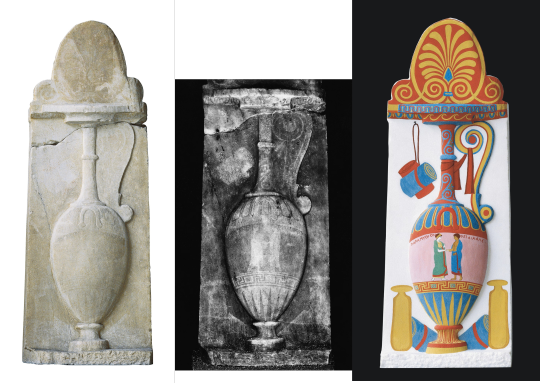
Funerary stele of Paramythion and Pheidiades, Athens (Greece), ca. 380/70 BC.
From left to right: 1) how it has been conserved nowadays, 2) the stele as seen in UV fluorescence, and 3) an experimental color reconstruction of how it would have looked like in antiquity.
Source: Gods in Colour: Polychromy in Antiquity online exhibit by Liebieghaus - Skulpturen Sammlung museum in Frankfurt (Germany).
359 notes
·
View notes
Text

DANNECKER, Heinrich Ariadne on the Panther (front view) 1812-14 Marble, height 146 cm Liebieghaus, Frankfurt
125 notes
·
View notes
Text

St Jerome - patron saint of archivists!
3 notes
·
View notes
Text

Allegory of Damnation in Hell - Ivory, by Johann Christoph Ludwig Lücke, Dresden, 1736
The Reiner Winkler Collection, Liebieghaus Sculpture Museum, Frankfurt, Germany
36 notes
·
View notes





